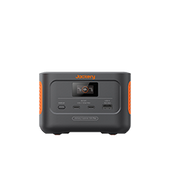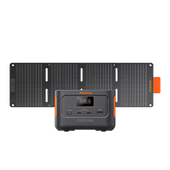What To Put In Your Survival Backpack: A quick checklist
What happens if you find yourself on an undesirable path when camping outdoors? A survival backpack can be an integral piece for any outdoorsman. It is a small, typically unassuming bag loaded with items that could save your life in an emergency situation. A survival backpack can also come in handy during indoor emergencies, such as power outages or fires.
Everything in your survival backpack should be well organized, such that if something happens, you know what to pick. The items you include in your backpack should be based on the climate you will be traveling in, as well as the specific emergency you are preparing for. Here is a quick checklist of items to help you pack your survival backpack.
What to Put in a Survival Backpack?

A survival backpack should contain everything you need to keep you safe. Since backpacking is about sufficiency, you should have the necessary tools and items to take you for a couple of days.
A well-conceived emergency survival backpack should align with the nature of your trip. For example, it makes sense to carry basic first aid items or a torch, when you're many miles from the nearest settlement.
Here is the catch - the last thing you want is to lag with things you don't need. Of course, a light backpack will help you move with agility over rough terrain. Your survival backpack should only contain the essentials.
Survival Backpack List
-
Food
Pack food that contains lots of calories - a combination of carbohydrates, fats, and proteins will do the trick. Avoid freeze-dried foods or those that go bad quickly.
-
Water
While the flowing water in the mountain may be clean, it's better to be safe. You need the right amount to drink to stay hydrated. If the water is from the wild, a water purifier will eliminate harmful bacteria.
-
Clothing
Warm clothing will ensure you stay comfortable during those chilly nights. A waterproof jacket will provide a layer of warmth from the elements.
-
Flashlight
If you get benighted, a flashlight will help you know where you're going. It can also help you give a signal if you get injured or stranded.
-
Extra cash
Make sure you have enough money to take you for at least three days. You may need it after the rescue if you can't access your ATM.
-
Utensils
Pack plastic utensils, cups, can openers, paper plates, etc.
-
Blankets
When things turn sour at night, it makes sense to have an emergency blanket. It reduces heat loss and can provide shelter in a hot environment.
-
Radio
It will help you contact other team members and keep updated on the rescue efforts.
-
Compass
A compass will give you direction. It doesn't have to be fancy - as long as it's working you're good to go.
Emergency Survival Backpack Kit
-
Phone charger
A phone charger will ensure your device doesn't run out of battery juice. You should go for options that align with your device. Think about your USB-A or USB-C charging ports.
-
Power station
If you're waiting for emergency services to arrive, the last thing you want is to run out of charge. A power station can power your devices including laptops, phones, portable refrigerators, CPAPs, etc. The best brands have USB ports directly attached.
-
CPAP machine
If you suffer from sleep apnea, a CPAP machine will keep your airways open as you sleep.
-
Pocket knife
During an emergency, having a pocket knife is like wearing a badge of honor. You want a tool to cut ropes, open packages, do tech repairs, and for general defense. Ideally, you need a stainless steel knife with features like a locking mechanism.
-
Cables
You should have both data and charging cables. While you can use either of them for charging your devices, some are not so efficient. For the security of your devices, you want to use cables designed for a specific task. And given that the devices you own have different ports, you should get cables that can fit in type C ports, DC ports, and A-ports.
-
A satellite phone
In situations where your cellphone is out of range, a satellite phone can be useful. You may have to subscribe to the actual service to use them.
Jackery Portable Power Station

Jackery power station is a reliable tool for emergencies. If you have many appliances to charge, you can go for the mighty Jackery Explorer 2000 Pro. It's fully charged with 200W solar panels in just two hours. The lithium-ion battery houses temperature core detectors, while the two chips ensure safe charging. In addition to that, this power station delivers 53 decibels to ensure quiet charging.
If you're on a budget, the Jackery Explorer 1000 can save you in an emergency. It's smaller and lighter - perfect for survival when off the grid. Also, the pure sine wave inverter protects your appliances, while the LED light ensures your safety outdoors. That's not all; the dual 100W fast charge provides steady power for devices such as drones, iPads, phones, and cameras. And depending on your needs, you can choose AC ports, A-ports, C-ports, or DC carports. You'll love the easy-to-read screen that shows input/output and what is in reserve.
Conclusion
An emergency survival backpack will keep you prepared for unforeseen events. But we're not just talking about food and water - it should contain everything you need for self-defense, medical assistance, navigation, and so on.
If you're prepping for an emergency, Jackery power stations will keep your devices running for hours. They are lightweight and provide a steady stream of power without noise. Not to mention, they are easy to set up and operate in close to silence. Other benefits include an initiative interface, a wide array of ports, and a rugged exterior.
Have you got your preparedness plans ready for emergencies? Jackery power stations can provide continuous power wherever you are. Subscribe to our newsletter and get exclusive deals and product news.






















































































